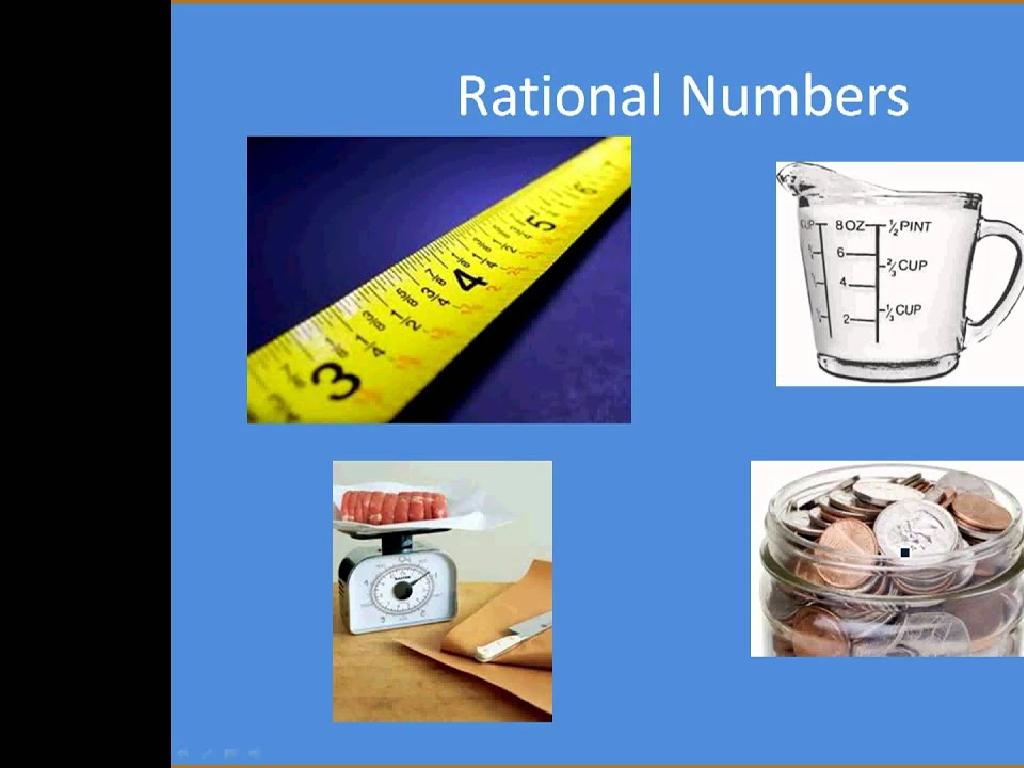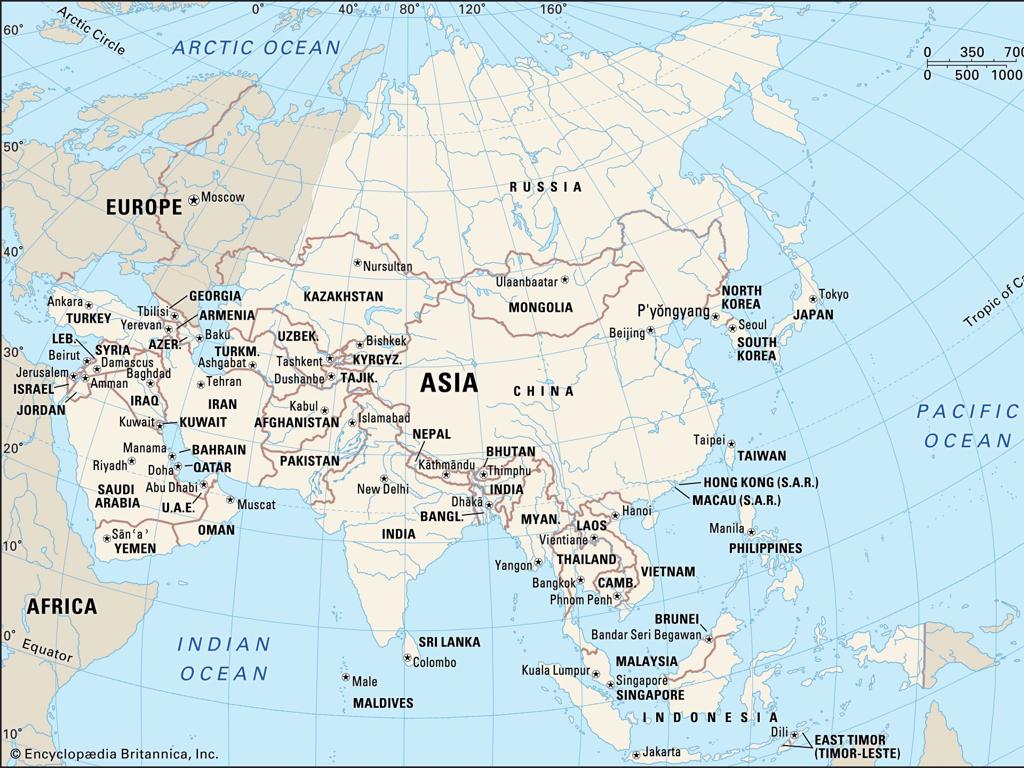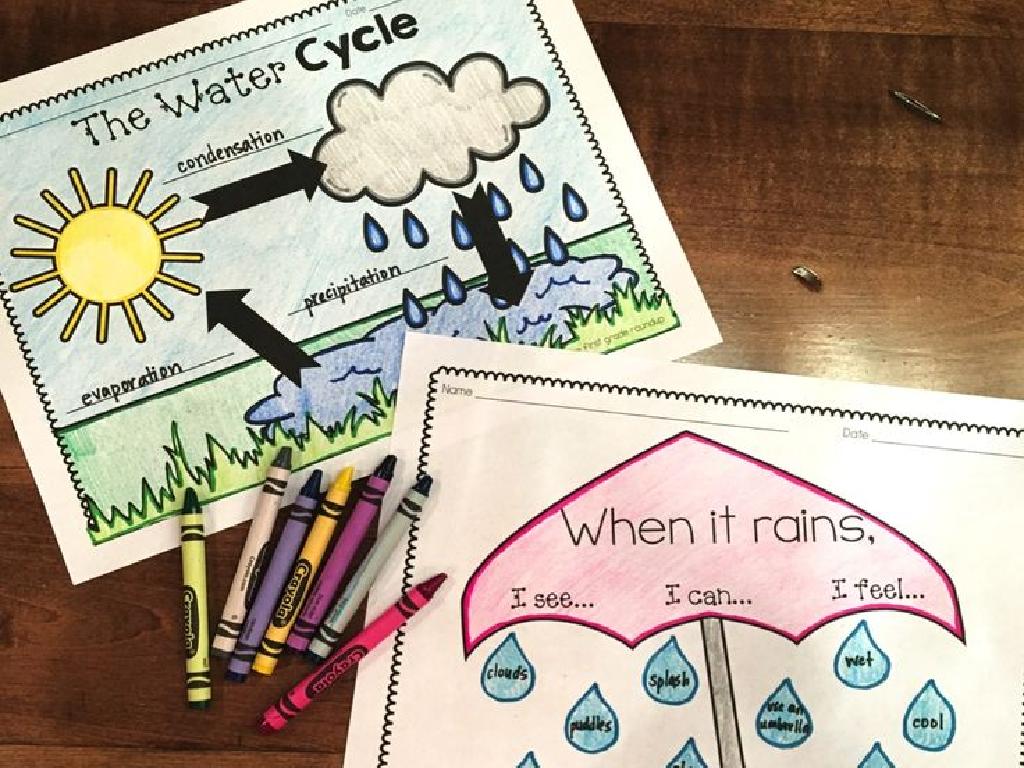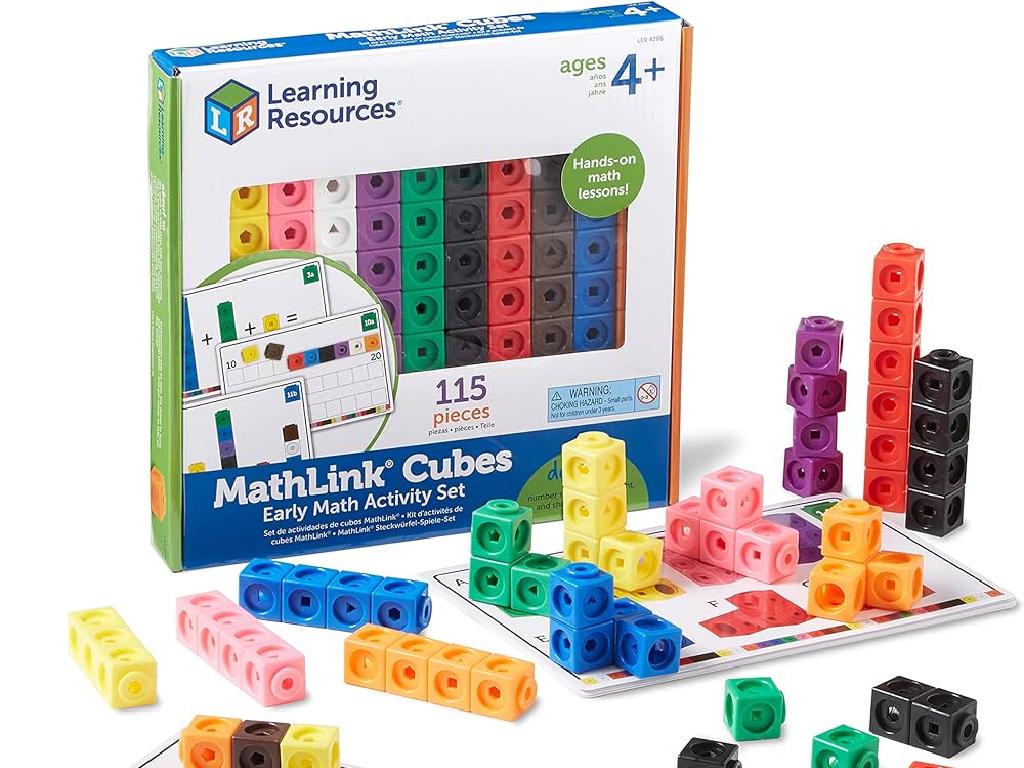Identify Rocks And Minerals
Subject: Science
Grade: Fifth grade
Topic: Rocks
Please LOG IN to download the presentation. Access is available to registered users only.
View More Content
Introduction to Rocks and Minerals
– What exactly are rocks?
– Rocks are solid natural substances made up of minerals.
– Exploring the rock cycle
– The rock cycle shows how rocks transform from one type to another over time.
– Types of rocks: Igneous, Sedimentary, Metamorphic
– Igneous rocks form from cooled lava or magma. Sedimentary rocks are made from particles of other rocks. Metamorphic rocks are altered by heat and pressure.
|
Begin the lesson by defining rocks as the solid material forming the surface of the earth, composed of one or more minerals. Explain the rock cycle as a series of processes that cause rocks to change, recycle, and form into different types over many years. Introduce the three main categories of rocks: igneous, formed from the cooling and solidification of magma or lava; sedimentary, created from the accumulation of small rock fragments or organic materials; and metamorphic, which are formed under the surface of the earth from the transformation of existing rock types through heat, pressure, and chemical processes. Provide examples of each rock type and encourage students to think about where they might have seen these rocks in their daily lives.
Exploring Igneous Rocks
– How Igneous Rocks Form
– Formed from cooled molten lava or magma
– Key Characteristics
– Hard, crystalline textures; may have air pockets
– Examples: Granite & Basalt
– Granite: used in countertops, Basalt: in construction
|
Igneous rocks are one of the three main rock types and form from the solidification of molten rock material. Teach students about the process of magma cooling either beneath the Earth’s surface, which forms intrusive igneous rocks like granite, or on the surface as extrusive rocks like basalt. Discuss the physical properties, such as the crystalline structure and potential for air pockets due to gas bubbles. Use granite and basalt as common examples, explaining their uses in everyday life to make the information relatable. Encourage students to bring in or research additional examples of igneous rocks and consider starting a rock collection as a class project.
Exploring Sedimentary Rocks
– How sedimentary rocks form
– Formed from particles of sand, shells, pebbles, and other fragments of material.
– Characteristics of sedimentary rocks
– Often have layers and can contain fossils.
– Examples: Sandstone, Limestone
– Sandstone is made from cemented sand, Limestone is made mostly of calcium carbonate.
|
This slide introduces students to sedimentary rocks, a major group of rocks. Explain that these rocks are formed by the accumulation and cementation of mineral and organic particles on the floor of bodies of water. Highlight the distinguishing features of sedimentary rocks, such as their layered appearance and potential to hold fossils, which can tell us about Earth’s history. Use sandstone and limestone as common examples, describing their composition and uses. Encourage students to think about and discuss how these rocks might have formed from layers of sand at the beach or shells at the bottom of the ocean.
Exploring Metamorphic Rocks
– How metamorphic rocks form
– Formed under heat and pressure without melting
– Key characteristics of metamorphic rocks
– They have a layered or banded appearance
– Examples: Slate and Marble
– Slate: used in roofing, Marble: used in sculpture and architecture
|
Metamorphic rocks are a type of rock that have been transformed by extreme heat and pressure, but importantly, without melting. This process can result in rocks with a distinct layered or banded appearance, known as foliation. Common examples of metamorphic rocks include slate, which is often used in roofing due to its durability, and marble, which is prized for its beauty in sculpture and architecture. Encourage students to think about how these rocks might have looked before they changed and where we might see these rocks in everyday life. This will help them understand the concept of metamorphism and the practical uses of these rocks.
Minerals in Rocks: A Closer Look
– Understanding what minerals are
– Minerals are natural, inorganic solids with a crystal structure.
– Formation and properties of minerals
– Minerals form from cooling magma or evaporation of water.
– Identifying Quartz, Feldspar, Mica
– Quartz is hard and clear, Feldspar is found in granite, Mica sheets off in thin layers.
|
This slide introduces students to the concept of minerals within rocks, aiming to explain what minerals are, how they form, and their distinct properties. Emphasize that minerals are the building blocks of rocks and have a specific chemical composition and crystal structure. Discuss the processes of mineral formation, such as the cooling of magma or the evaporation of mineral-rich water. Highlight the properties of common minerals like Quartz, Feldspar, and Mica, and how these can be identified by their appearance and physical characteristics. Encourage students to bring in samples or use a classroom mineral collection to observe and identify these minerals in hands-on activities.
Rock Identification Essentials
– Tools for rock & mineral ID
– Use a magnifying glass, streak plate, & hardness kit.
– Significance of color & streak
– Color can vary; streak is the color of its powder.
– Understanding hardness
– Hardness measures scratch resistance.
– Hands-on identification practice
|
This slide introduces students to the basic tools and techniques for identifying rocks and minerals. Emphasize the use of a magnifying glass for close observation, a streak plate to observe the true color of the mineral’s powder, and a hardness kit to test scratch resistance. Explain that while the color of a rock or mineral can be deceptive due to impurities, the streak color is more reliable. Hardness is determined by the Mohs scale and helps distinguish between different materials. During the hands-on practice, provide a variety of rocks and minerals for students to test and identify using these methods. Encourage them to record their observations and conclusions. This activity will help solidify their understanding of the properties of rocks and minerals.
The Rock Cycle: Transformation Over Time
– Rocks change over time
– Types of rocks are interconnected
– Igneous, sedimentary, and metamorphic rocks can convert into each other
– Weathering and erosion’s role
– Breaking down and movement of rocks by natural forces
– Pressure transforms rocks
– Deep earth pressure turns sediment into new rock forms
|
This slide introduces the concept of the rock cycle to students, explaining how rocks are not static but change forms over time through various geological processes. Emphasize the interconnections between the three main rock types: igneous, sedimentary, and metamorphic. Discuss how weathering and erosion contribute to the rock cycle by breaking down rocks into smaller pieces and transporting them, which can eventually lead to the formation of sedimentary rocks. Highlight the role of pressure in the earth’s crust in transforming rocks, such as turning sediment into metamorphic rock. Use diagrams to illustrate the cycle and provide examples of each rock type. Encourage students to think about how the earth recycles materials in a never-ending loop.
Class Activity: Rock and Mineral Identification
– Gather various rock and mineral samples
– Classify each sample using identification tools
– Use tools like a magnifying glass or streak plate
– Discuss findings with classmates
– Record and compare results
– Note the characteristics: color, texture, hardness
|
This activity is designed to give students hands-on experience with identifying different rocks and minerals. Provide a collection of rock and mineral samples for students to examine. They should use identification tools such as magnifying glasses, streak plates, and reference charts to observe and classify each sample based on its properties. Encourage students to discuss their observations with their peers and record their findings. Possible variations of the activity could include: 1) Matching rocks to their types, 2) Testing hardness with a scratch test, 3) Observing reactions with vinegar to test for limestone, 4) Using a black light to identify fluorescent minerals, 5) Comparing the weight of different minerals. This will help them understand the diversity of geological materials and the methods used by scientists to classify them.





